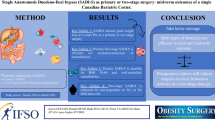Abstract
Although Hirschsprung’s disease (HD) typically presents in the newborn period, it is often diagnosed in older children, in whom the presentation and management remain poorly defined. We hypothesized that older patients with HD have a milder variant of the disease with an improved prognosis compared with those diagnosed earlier. Children with HD (1995–2001) were divided into Group I (diagnosis before 30 days) and Group II (after 30 days). Patients with total colonic disease were excluded. There were 66 patients; 47 in Group I and 19 in group II. Mean age at diagnosis was 7.1±1.3 days (range 1–30 days) versus 27±10 months (1.3 months–19 years). Older children differed mainly in the symptoms at presentation and the length of the involved segment of aganglionosis. Surgical strategies were applied equally in both groups. Complications, including postoperative enterocolitis, occurred equally, but the length of stay and costs were lower in Group II. The delayed diagnosis of HD does not worsen outcomes of older children with HD. This finding implies that these children have a milder form of the disease, perhaps because of adaptation to the aganglionic state.
Similar content being viewed by others
References
Albanese CT, Jennings RW, Smith B, et al. (1999) Perineal one-stage pull-through for Hirschsprung’s disease. J Pediatr Surg 34:377–380
Coran AG, Teitelbaum DH (2000) Recent advances in the management of Hirschsprung’s disease. Am J Surg 180:382–387
Hackam DJ, Superina RA, Pearl RH (1997) Single-stage repair of Hirschsprung’s disease: a comparison of 109 patients over 5 years. J Pediatr Surg 32:1028–1031
Hackam DJ, Filler RM, Pearl RH (1998) Enterocolitis after the surgical treatment of Hirschsprung’s disease: risk factors and financial impact. J Pediatr Surg 33:830–833
Harjai MM (2000) Hirschsprung’s disease: revisited. J Postgrad Med 46:52–54
Kim CY, Park JG, Park KW, et al. (1995) Adult Hirschsprung’s disease. Results of the Duhamel’s procedure. Int J Colorectal Dis 10:156–160
Langer JC, Fitzgerald PG, Winthrop AL, et al. (1996) One-stage versus two-stage Soave pull-through for Hirschsprung’s disease in the first year of life. J Pediatr Surg 31:33–36
Langer JC, Seifert M, Minkes RK (2000) One-stage Soave pull-through for Hirschsprung’s disease: a comparison of the transanal and open approaches. J Pediatr Surg 35:820–822
Leung AK, Chan PY, Cho HY (1996) Constipation in children. Am Fam Physician 54:611–618
Martucciello G, Ceccherini I, Lerone M, et al. (2000) Pathogenesis of Hirschsprung’s disease. J Pediatr Surg 35:1017–1025
Nakao M, Suita S, Taguchi T, et al. (2001) Fourteen-year experience of acetylcholinesterase staining for rectal mucosal biopsy in neonatal Hirschsprung’s disease. J Pediatr Surg 36:1357–1363
Nowicki MJ, Bishop PR (1999) Organic causes of constipation in infants and children. Pediatr Ann 28:293–300
Rogowski J (1999) Measuring the cost of neonatal and perinatal care. Pediatrics 103:329–334
Swenson O (1998) Treatment of Hirschsprung’s disease. J Pediatr Surg 33:1849–1850
Teitelbaum DH, Coran AG (1998) Enterocolitis. Semin Pediatr Surg 7:162–169
Wu JS, Schoetz DJ, Jr., Coller JA, et al. (1995) Treatment of Hirschsprung’s disease in the adult. Report of five cases. Dis Colon Rectum 38:655–659
Yanchar NL, Soucy P (1999) Long-term outcome after Hirschsprung’s disease: patients’ perspectives. J Pediatr Surg 34:1152–1160
Author information
Authors and Affiliations
Corresponding author
Rights and permissions
About this article
Cite this article
Hackam, D.J., Reblock, K.K., Redlinger, R.E. et al. Diagnosis and outcome of Hirschsprung’s disease: does age really matter?. Ped Surgery Int 20, 319–322 (2004). https://doi.org/10.1007/s00383-004-1188-5
Accepted:
Published:
Issue Date:
DOI: https://doi.org/10.1007/s00383-004-1188-5




